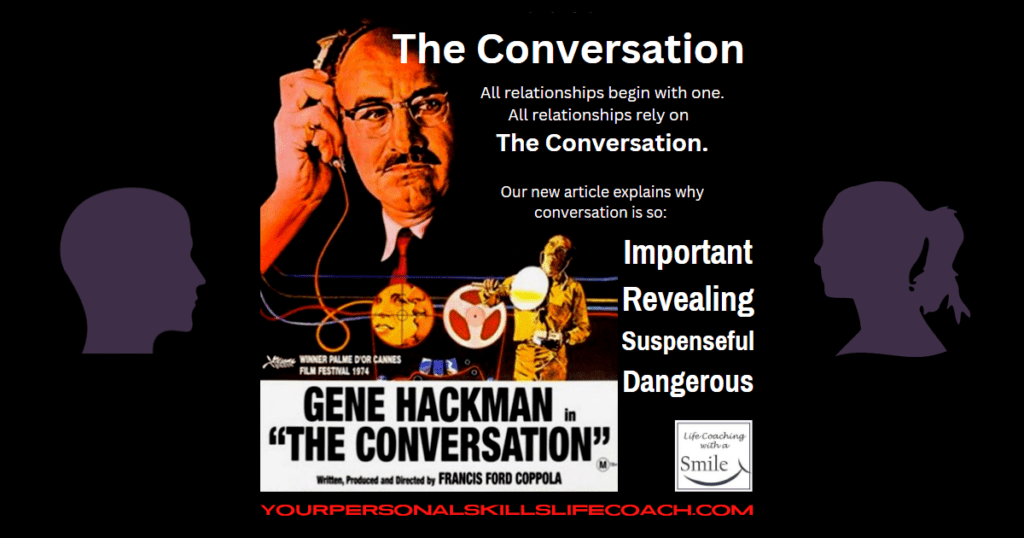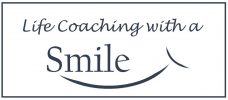Every relationship begins with the conversation. Some of those first conversations go better than others. Moreover, some would-be conversations don’t happen at all. I have spent years studying the art of communication and conversation. (No they are not the same thing.) Because this article is the first in a new series on Relationships, we are going to start where all relationships start: The Conversation.

Most of us have been in the awkward position of not knowing what to say. You see your boss outside of work and you freeze. That person you are interested in ends up in line next to you and you can barely say “Hello.” Where are the words?
In this post-pandemic world, where we have been delegated to online digital communication, it’s no wonder we are tongue-tied. It’s no wonder we are out of practice. Does starting a conversation feel daunting or even terrifying to you? You are not alone. We text or even send an emoji in lieu of conversation. By doing so we miss the fun of sharing real reactions to real conversations.
Conversation Tips
As with most things, conversation will get better with practice. Also, it will help if you employ a bit of mindful dedication to, not just instigate conversation, but to remain engaged throughout the conversation, even if you are only one of a larger group. How do we connect to real people (avatars not needed or wanted) with real conversations? Here are some conversation tips:
Eye contact. In a room full of strangers or even people you know, the first step toward conversation is eye contact. Look at people and smile and if you receive a positive response, you can comfortably begin a conversation.
Ask a question. An easy beginning is to ask a simple question. A question about the situation you find yourself in is better than one about the person you are talking with. Something like, “How do you know our host?”
Situation can be your guide. The situation (context) of the conversation can be your guide. Is it a social, work or family situation? Ask questions about that, “Have you heard anything about the food here?” Ask a question related to the situation you find yourself in.
Yourself. Just be that person. You don’t have to be clever. The goal is to connect with another human. Be friendly, smile, really listen and show you are interested in what they have to say.
+++++
Don’t over-think it. Be present, not on a safari in your head thinking of all the things that could go wrong. Relax; you might have fun.
Open ended question. Ask one. Then ask follow-up questions. (What… or How…) Once you get the ball rolling, ask questions to find common ground. “Do you like going to the movies?”
Exit strategy. Have one ready. If you are reluctant to try something, plan your exit before you begin. Meeting people after work, plan a few conversations if you need to. Stay as long as you are comfortable. Then leave with a plan. “I have to run, I promised my brother I’d let his dog out. “
Smile. Your body language and tone are as important as your words. Smiling shows you are not a threat. You are not mean. You are fun, nice, comfortable. Be your best self. That is always good enough.
+++++
Introduction/Ice-breaker. Just shaking a hand and saying, “Hello, my name is (Your Name Here). Nice to meet you.” This simple act can break the ice. Good follow-ups come with practice but remember, “People will forget what you said, people will forget what you did, but people will never forget how you made them feel.” — Maya Angelou
Treat people with respect. Once you hear someone’s name, repeat it. “So Pete, how do you know Becky?” When leaving a conversation, always say, “It was nice to meet you, Pete.” Maybe add something like, “Since we both like to swim, maybe we’ll run into each other at the pool.”
Conclusion
Webster defines conversation as “A talk, especially an informal one, between two or more people, in which news and ideas are exchanged.” Your best relationships can begin with a simple conversation. Just be present and EASY DOES IT.
P.S. These is an easy way to discover how good you are at the art of conversation. What kind of conversationalist are you? You can take our new self-assessment called The Conversationalist Quiz. It’s easy. It’s quick. And it’s free. Try it.
Related Articles:
* Please leave a comment below. You may comment anonymously or you may use your first name. We may post or quote your comment on the website. We will never post or share your last name, email address or any other personal identifying information.
